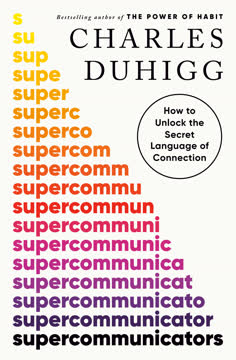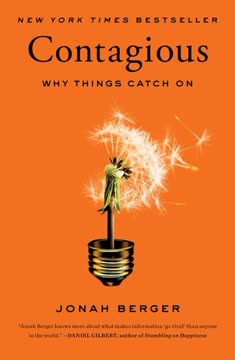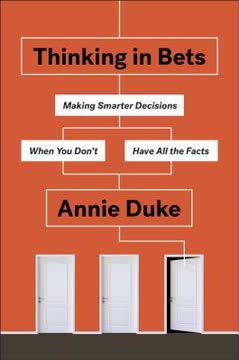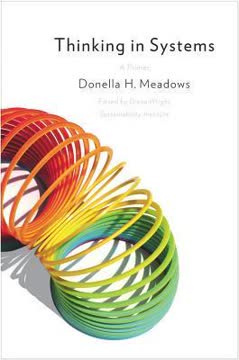मुख्य निष्कर्ष
1. अवचेतन मन को समझना: प्रभावी विपणन की कुंजी
हम तर्कसंगत प्राणी नहीं हैं जो भावनाओं से प्रभावित होते हैं। इसके बजाय, हम भावनात्मक प्राणी हैं जो अपने व्यवहार को तर्कसंगत बनाने की कोशिश करते हैं।
अवचेतन की शक्ति। हमारा मस्तिष्क प्रतिदिन 35,000 से अधिक निर्णय लेता है, जिनमें से अधिकांश अवचेतन रूप से संसाधित होते हैं। यह सिस्टम 1 सोच तेज, स्वचालित और भावनाओं और संदर्भ से गहराई से प्रभावित होती है। इसके विपरीत, सिस्टम 2 सोच धीमी, तार्किक और प्रयास की आवश्यकता होती है। विपणक को सिस्टम 1 का उपयोग करना चाहिए ताकि वे प्रभावी अभियान बना सकें जो उपभोक्ताओं के साथ गहरे स्तर पर गूंजें।
फिल्टर को तोड़ना। आज की VUCA (अस्थिर, अनिश्चित, जटिल और अस्पष्ट) दुनिया में, उपभोक्ता प्रतिदिन हजारों विपणन संदेशों से बमबारी होते हैं। अलग दिखने के लिए, विपणकों को उन अवचेतन कारकों को समझना और उनका लाभ उठाना चाहिए जो मानव व्यवहार को संचालित करते हैं। यह दृष्टिकोण ब्रांडों को ऐसा संदेश बनाने की अनुमति देता है जो उपभोक्ताओं के लिए स्वाभाविक और सहज महसूस होता है, जिससे जुड़ाव और क्रिया की संभावना बढ़ जाती है।
2. माइंडस्टेट व्यवहार मॉडल के चार कारक
जब आप माइंडस्टेट व्यवहार मॉडल के सभी चार कारकों को अपने संदेश और रचनात्मकता में एकीकृत करते हैं, तो यह सीधे आपके उपभोक्ताओं के अवचेतन को छूता है।
माइंडस्टेट व्यवहार मॉडल। यह ढांचा चार प्रमुख कारकों से मिलकर बना है जो उपभोक्ता व्यवहार को प्रभावित करते हैं:
- लक्ष्य: उपभोक्ता क्या हासिल करना चाहते हैं
- प्रेरणाएँ: उनके लक्ष्यों के पीछे की भावनात्मक प्रेरक
- नियामक दृष्टिकोण: वे अपने लक्ष्यों का पीछा कैसे करते हैं (प्रमोशन बनाम रोकथाम)
- संज्ञानात्मक ह्यूरिस्टिक्स: निर्णय लेने में उपयोग किए जाने वाले मानसिक शॉर्टकट
एकीकृत दृष्टिकोण। इन चार कारकों को विपणन रणनीतियों में समझकर और शामिल करके, ब्रांड अधिक प्रभावी और प्रेरक संदेश बना सकते हैं। यह मॉडल उपभोक्ताओं के साथ गहरे, अवचेतन स्तर पर गूंजने वाले अभियानों को डिजाइन करने के लिए एक वैज्ञानिक आधार प्रदान करता है, जिससे जुड़ाव और बिक्री में वृद्धि होती है।
3. लक्ष्यों को सक्रिय करना: उपभोक्ता व्यवहार की नींव
लक्ष्य हमारे निर्णयों और कार्यों के लिए एक लक्ष्य प्रदान करते हैं और हमारे दैनिक जीवन के लिए दिशा। जब हम कार्य करते हैं, तो यह हमेशा एक लक्ष्य के करीब जाने के लिए होता है।
उपभोक्ता लक्ष्यों को समझना। लक्ष्य कार्यात्मक (जैसे, पैसे बचाना) या उच्च-क्रम (जैसे, अच्छे माता-पिता की तरह महसूस करना) हो सकते हैं। विपणकों को उच्च-क्रम के लक्ष्यों की पहचान और सक्रियता पर ध्यान केंद्रित करना चाहिए, क्योंकि ये उपभोक्ताओं के साथ मजबूत भावनात्मक संबंध बनाते हैं।
अनुसंधान तकनीकें। उपभोक्ताओं के लक्ष्यों को उजागर करने के लिए, निम्नलिखित विधियों का उपयोग करें:
- संदर्भ में अनुसंधान (प्राकृतिक सेटिंग में व्यवहार का अवलोकन)
- कहानी सुनाना और भरने के लिए व्यायाम
- प्रोजेक्टिव तकनीकें (जैसे, छवि छंटाई, कोलाज बनाना)
- वंचना व्यायाम
कार्यात्मक और उच्च-क्रम के लक्ष्यों को समझकर, विपणक ऐसे संदेश बना सकते हैं जो उपभोक्ताओं के साथ अधिक गहराई से गूंजते हैं और क्रिया को प्रेरित करते हैं।
4. प्रेरणाओं को सक्रिय करना: निर्णय लेने का भावनात्मक इंजन
प्रेरणाएँ लोगों को गहरे भावनात्मक स्तर पर प्रेरित करती हैं। लोगों की वास्तविक प्रेरणाओं को समझना आपको उन्हें कार्य करने के इरादे से वास्तविक क्रिया में बदलने में मदद करेगा।
नौ मुख्य प्रेरणाएँ। ये मानव व्यवहार के सार्वभौमिक प्रेरक हैं:
- उपलब्धि
- स्वायत्तता
- संबंध
- क्षमता
- सशक्तिकरण
- संलग्नता
- सम्मान
- पोषण
- सुरक्षा
प्रेरणाओं की पहचान और लाभ उठाना। उपभोक्ताओं की प्राथमिक प्रेरणाओं को उजागर करने के लिए, निम्नलिखित तकनीकों का उपयोग करें:
- छवि छंटाई व्यायाम
- कहानी सुनाना
- भूमिका निभाने के परिदृश्य
उपभोक्ताओं की मुख्य प्रेरणाओं के साथ विपणन संदेशों को संरेखित करके, ब्रांड मजबूत भावनात्मक संबंध बना सकते हैं और क्रिया की संभावना बढ़ा सकते हैं।
5. विकल्पों को फ्रेम करना: उपभोक्ताओं के नियामक फोकस के साथ संरेखण
जब आप उनके उच्च-क्रम के लक्ष्यों से जुड़ते हैं, तो आप उपभोक्ताओं में बहुत सारी भावनाएँ उत्पन्न कर सकते हैं।
नियामक फोकस सिद्धांत। यह अवधारणा बताती है कि लोग लक्ष्यों का पीछा कैसे करते हैं:
- प्रमोशन फोकस: सकारात्मक परिणामों की खोज और लाभ को अधिकतम करना
- रोकथाम फोकस: नकारात्मक परिणामों से बचना और हानियों को न्यूनतम करना
फ्रेमिंग रणनीतियाँ। अपने संदेश को उपभोक्ताओं के नियामक फोकस के साथ संरेखित करें:
- प्रमोशन फोकस: लाभ, विकास और अवसरों पर जोर दें
- रोकथाम फोकस: सुरक्षा, सुरक्षा और जोखिम से बचने पर प्रकाश डालें
उपभोक्ताओं के स्वाभाविक नियामक फोकस के साथ मेल खाने वाले तरीके से विकल्पों को फ्रेम करके, विपणक अपने संदेशों को अधिक सहज और आकर्षक बना सकते हैं।
6. व्यवहार को सक्रिय करना: संज्ञानात्मक ह्यूरिस्टिक्स का लाभ उठाना
संज्ञानात्मक ह्यूरिस्टिक्स माइंडस्टेट व्यवहार मॉडल के चौथे चरण को पूरा करता है। अब तक, हमने उपभोक्ता के लक्ष्य को सक्रिय करना सीखा है, हमने उसकी प्रेरणा को सक्रिय किया है, और हमने उसके विकल्प को उसके नियामक फिट और फोकस के अनुसार फ्रेम किया है। इस बिंदु पर, हमें अपने ग्राहक में एक मनोवैज्ञानिक गर्म स्थिति बनानी चाहिए और वह कार्य करना चाहता है।
ह्यूरिस्टिक्स को समझना। संज्ञानात्मक ह्यूरिस्टिक्स वे मानसिक शॉर्टकट हैं जो लोग तेजी से और आसानी से निर्णय लेने के लिए उपयोग करते हैं। कुछ सामान्य ह्यूरिस्टिक्स में शामिल हैं:
- कमी प्रभाव
- सामाजिक प्रमाण
- एंकरिंग
- हानि से बचाव
- उपलब्धता पूर्वाग्रह
विपणन में ह्यूरिस्टिक्स का उपयोग। विपणन संदेशों में प्रासंगिक ह्यूरिस्टिक्स को शामिल करके, ब्रांड:
- निर्णय लेने को अधिक स्वाभाविक और सहज बना सकते हैं
- उपभोक्ताओं से आवश्यक संज्ञानात्मक प्रयास को कम कर सकते हैं
- तात्कालिक क्रिया की संभावना बढ़ा सकते हैं
अपने लक्षित दर्शकों द्वारा उपयोग किए जाने वाले प्रमुख ह्यूरिस्टिक्स की पहचान करें और उन्हें अपने संदेश में शामिल करें ताकि इच्छित व्यवहार को सक्रिय किया जा सके।
7. अठारह माइंडस्टेट्स: लक्षित विपणन के लिए एक ढांचा
माइंडस्टेट एक अस्थायी मानसिक स्थिति है जब एक व्यक्ति तर्कसंगत से भावनात्मक रूप से सहज निर्णय लेने में बदलता है।
माइंडस्टेट्स को समझना। अठारह माइंडस्टेट्स नौ मुख्य प्रेरणाओं को दो नियामक दृष्टिकोणों (प्रमोशन और रोकथाम) के साथ मिलाकर बनाए जाते हैं। उदाहरणों में शामिल हैं:
- आशावादी उपलब्धि
- सतर्क संबंध
- आशावादी पोषण
- सतर्क सुरक्षा
माइंडस्टेट प्रोफाइल। प्रत्येक माइंडस्टेट का एक अद्वितीय प्रोफाइल होता है जिसमें शामिल हैं:
- विशेषताएँ और इच्छाएँ
- सक्रिय करने के लिए लक्ष्य
- प्रेरणाएँ सक्रिय करने के लिए
- फ्रेम करने का दृष्टिकोण
- विचार करने के लिए ट्रिगर्स
- उत्पन्न करने के लिए भावनाएँ
अपने लक्षित दर्शकों के लिए प्रासंगिक माइंडस्टेट्स की पहचान करके, विपणक अधिक लक्षित और प्रभावी संदेश बना सकते हैं जो गहरे स्तर पर गूंजते हैं।
8. वास्तविक दुनिया के विपणन में माइंडस्टेट व्यवहार मॉडल का अनुप्रयोग
विपणक के रूप में आपका काम संदेशों और अनुभवों का उपयोग करके अपने उपभोक्ता की भावनात्मक उत्तेजना को बढ़ाना है, और आपको ऐसा करना चाहिए। लेकिन सबसे महत्वपूर्ण बात यह है कि आपको उन्हें इस तरह से संलग्न करना चाहिए कि वास्तविक व्यवहार को प्रेरित किया जा सके।
अनुप्रयोग प्रक्रिया:
- उपभोक्ता के लक्ष्यों, प्रेरणाओं और नियामक फोकस की पहचान के लिए अनुसंधान करें
- अपने लक्षित दर्शकों के लिए प्रासंगिक माइंडस्टेट(s) निर्धारित करें
- रचनात्मक विकास को मार्गदर्शित करने के लिए माइंडस्टेट प्रोफाइल का उपयोग करें
- इच्छित व्यवहार को सक्रिय करने के लिए प्रासंगिक ह्यूरिस्टिक्स को शामिल करें
- व्यवहारिक परिणामों के आधार पर संदेश का परीक्षण और सुधार करें
कला और विज्ञान का संतुलन। जबकि माइंडस्टेट व्यवहार मॉडल एक वैज्ञानिक ढांचा प्रदान करता है, यह आवश्यक है कि रचनात्मकता और ब्रांड पहचान को बनाए रखा जाए। इस मॉडल का उपयोग अपने विपणन प्रयासों को परिष्कृत और बढ़ाने के लिए एक मार्गदर्शक के रूप में करें, न कि एक कठोर सूत्र के रूप में।
व्यवहार विज्ञान को विपणन रणनीतियों में एकीकृत करके, ब्रांड अधिक प्रभावी, भावनात्मक रूप से संलग्न अभियानों का निर्माण कर सकते हैं जो वास्तविक व्यावसायिक परिणामों को प्रेरित करते हैं।
अंतिम अपडेट:
FAQ
What's "Marketing to Mindstates" about?
- Behavioral Science in Marketing: "Marketing to Mindstates" by Will Leach is a guide on applying behavioral science to marketing and research. It focuses on understanding and influencing consumer behavior through nonconscious mindstates.
- Mindstate Behavioral Model: The book introduces the Mindstate Behavioral Model, which integrates four social sciences to understand the nonconscious factors driving human behavior.
- Practical Application: It provides actionable tactics for marketers to design creative messaging that emotionally connects with consumers, driving them to choose a brand.
- Field Guide Approach: Unlike academic texts, this book is a practical field guide aimed at solving real business problems using behavioral science.
Why should I read "Marketing to Mindstates"?
- Improve Marketing Effectiveness: The book offers insights into making marketing messages more effective by tapping into consumers' emotional mindstates.
- Understand Consumer Behavior: It helps marketers understand the nonconscious drivers of consumer decisions, which are often overlooked in traditional marketing.
- Actionable Strategies: Readers gain access to practical strategies and tactics that can be immediately applied to improve marketing ROI.
- Behavioral Science Simplified: The book simplifies complex behavioral science concepts, making them accessible and applicable for marketers at any level.
What are the key takeaways of "Marketing to Mindstates"?
- Nonconscious Decision Making: Most consumer decisions are made nonconsciously, influenced by emotional mindstates rather than rational thought.
- Mindstate Activation: Marketers can activate specific mindstates by aligning their messaging with consumers' goals, motivations, and regulatory focus.
- Behavior Design: Applying behavior design principles can make marketing messages more persuasive and effective.
- Eighteen Mindstates: The book identifies eighteen unique mindstates that marketers can target to influence consumer behavior.
How does the Mindstate Behavioral Model work?
- Four Key Factors: The model incorporates goals, motivations, regulatory approach, and cognitive heuristics to understand consumer behavior.
- Mindstate Profiles: It identifies eighteen mindstates based on combinations of motivations and regulatory focus, providing a framework for targeted marketing.
- Behavioral Activation Briefs: These briefs offer specific strategies and tactics for each mindstate, guiding marketers in crafting effective messages.
- Practical Application: The model is designed to be used in real-world marketing scenarios, helping brands connect with consumers on a deeper level.
What is behavior design according to Will Leach?
- Definition: Behavior design is the process of applying neurological and behavioral insights to influence consumer behavior through marketing.
- Consumer Interactions: It involves designing customer interactions that psychologically influence and change behavior.
- Science and Art: Behavior design combines scientific principles with creative marketing to emotionally engage consumers.
- Practical Examples: The book provides examples of behavior design in action, such as using cognitive heuristics to make decisions easier for consumers.
What are the nine core human motivations in "Marketing to Mindstates"?
- Achievement: The desire to feel successful and proud by overcoming obstacles.
- Autonomy: The need for independence and self-determination in actions.
- Belonging: The drive to feel aligned and connected with others.
- Competence: The motivation to feel capable and skilled in activities.
- Empowerment: The feeling of being authorized and equipped to act on choices.
- Engagement: The desire for ongoing excitement and interest in activities.
- Esteem: The need for approval, respect, and admiration from others.
- Nurturance: The feeling of being appreciated and the ability to care for others.
- Security: The need to feel safe and protected from threats.
How can marketers apply the Mindstate Behavioral Model?
- Identify Consumer Mindstates: Use research to determine which of the eighteen mindstates your target consumers are in during decision-making moments.
- Align Messaging: Craft marketing messages that align with the identified mindstate, focusing on the consumer's goals, motivations, and regulatory focus.
- Use Behavioral Activation Briefs: Follow the specific strategies and tactics outlined in the briefs to optimize marketing efforts.
- Test and Refine: Continuously test and refine marketing strategies to ensure they effectively engage consumers in their mindstates.
What are some examples of cognitive heuristics in marketing?
- Scarcity Effect: Consumers place more value on items perceived as scarce, prompting immediate action.
- Loss Aversion: People avoid losing things they feel ownership over, influencing purchasing decisions.
- Social Proof: Consumers are more likely to buy products perceived as popular among large groups.
- Anchoring: The first option presented often serves as a reference point for evaluating other options.
What are the best quotes from "Marketing to Mindstates" and what do they mean?
- "To change minds, you must first change the state of mind." This quote emphasizes the importance of understanding and influencing consumers' emotional mindstates to drive behavior change.
- "We don’t think as much as we think we think." It highlights the nonconscious nature of most consumer decisions, which are driven by emotions rather than rational thought.
- "Behavior design is part intuition, part artistry, and part science." This quote underscores the blend of creativity and scientific principles in crafting effective marketing messages.
- "The future of marketing is a blend of art and science." It suggests that successful marketing requires integrating behavioral science with creative strategies.
How does "Marketing to Mindstates" differ from traditional marketing approaches?
- Focus on Nonconscious: Unlike traditional marketing, which often targets rational decision-making, this book focuses on nonconscious, emotional drivers.
- Behavioral Science Integration: It integrates behavioral science principles into marketing strategies, offering a more scientific approach to influencing consumer behavior.
- Practical Field Guide: The book provides actionable tactics and real-world examples, making it a practical guide for marketers rather than a theoretical text.
- Mindstate Targeting: It introduces the concept of targeting specific mindstates, allowing for more personalized and effective marketing messages.
What is the role of regulatory focus in the Mindstate Behavioral Model?
- Promotion vs. Prevention: Regulatory focus refers to whether consumers approach goals with a promotion (seeking gains) or prevention (avoiding losses) mindset.
- Framing Messages: Understanding regulatory focus helps marketers frame messages in a way that aligns with consumers' natural decision-making strategies.
- Influence on Behavior: Aligning marketing messages with the appropriate regulatory focus can make them feel more natural and relatable to consumers.
- Strategic Application: The book provides strategies for identifying and applying regulatory focus in marketing efforts to enhance message effectiveness.
How can marketers identify consumer mindstates?
- Conduct Research: Use behavioral research methods to understand consumers' goals, motivations, and regulatory focus in decision-making contexts.
- Observe Behavior: Pay attention to consumer behavior in real-world settings to identify nonconscious drivers and mindstates.
- Use Mindstate Profiles: Refer to the mindstate profiles provided in the book to gain insights into consumers' psychological characteristics and decision-making processes.
- Test and Validate: Continuously test marketing strategies and validate them against consumer mindstates to ensure alignment and effectiveness.
समीक्षाएं
मार्केटिंग टू माइंडस्टेट्स को मिली-जुली समीक्षाएँ प्राप्त होती हैं, जिनमें रेटिंग 1 से 5 सितारों के बीच होती है। सकारात्मक समीक्षाएँ इसके व्यवहारिक विज्ञान के दृष्टिकोण, समझने में आसान ढांचे और रणनीतिकारों के लिए उपयोगी उपकरणों की प्रशंसा करती हैं। आलोचक यह तर्क करते हैं कि इसमें वैज्ञानिक समर्थन और मौलिकता की कमी है, इसे स्थापित अवधारणाओं का अत्यधिक सरलीकरण बताते हैं। कुछ पाठक इसे दोहरावदार या बुनियादी पाते हैं, जबकि अन्य इसे व्यवहारिक अर्थशास्त्र में नए लोगों के लिए सुलभता के लिए सराहते हैं। पुस्तक में मनोविज्ञान और न्यूरोसाइंस के मार्केटिंग में उपयोग की प्रशंसा और आलोचना दोनों होती है, और इसके मूल्य और मौलिकता पर राय विभाजित है।
Similar Books














